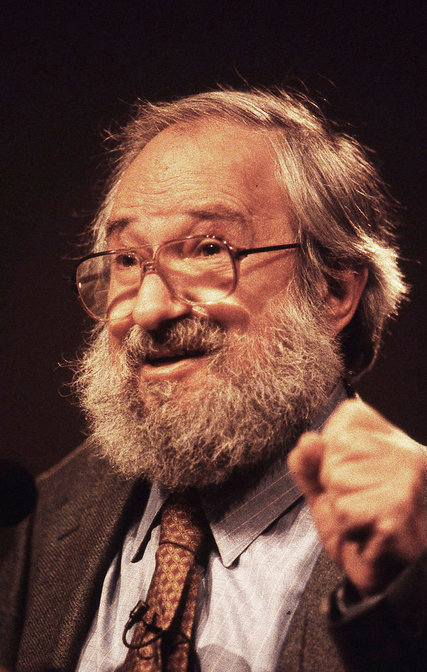The Leap
Sunday, March 18th, 2018[ by Charles Cameron — three or four steps out along stepping stones you have no idea where you’ll land next ]
.
You know that for me the basic unit is the duet / duel? And that what’s most interesting in the duel / duet — let’s just call it the dual — is the leap, the creative leap, at best the stereophany between them. Well, my bassic image for that leap is the DoubleQuote board:
That’s a simple graph with two nodes and an edge between them:
And beauty and depth — creativity — lies in the leap along the edge between them.
**
The rue, as I discussed with David Gelernter lo these many years ago, is that the greatest beauty is found — identified, by AI search; acheved, by artistry — when the two nodes are rich, the edge is rich in connections between themgreat:, and the distance between them is
I don’t know how Theodor von Kármán came by his Vortex Street, and I’ve spent a decade in Pasadena wandering its streets and even picked up his four volume works — signed — at a CalTech book sale, but if he had the Van Gogh painting in the back of his mind, there’s the beginning, the seed of an awesome leap.
And you might say van Gogh made a mighty leap, pre-intuiting the von Kármán pattern in the night ckouds..
**
Okay, here’s a terrific leap by Claude Shannon:
There was this idea that you could connect the computer to a machine to turn the cranks on a milling machine and make aircraft parts. At the time, this was a huge leap. It was connecting two alien realms: this new computer thing and a milling machine. What it let you do was make aircraft parts you couldn’t make any other way.
The key words here are “connecting two alien realms“.
Roughly:

Or as Milling Machine; The History puts it:
Perhaps the milling machine’s greatest distinction is that in 1954 it became the first machine tool to be controlled numerically, thereby representing one of the greatest industrial advances of the twentieth century.
And then there’s this leap too, earlier:
In the 1930s and working independently, American electronic engineer Claude Shannon and Soviet logician Victor Shestakov[65] both showed a one-to-one correspondence between the concepts of Boolean logic and certain electrical circuits, now called logic gates, which are now ubiquitous in digital computers.
**
Play — play, I emphasize — is the connecting link or edge that leaps between theem:
If there were an Olympic sport of mind leaps — why forever not? long leaps, high leaps, long high leaps, ski leaps — Claude Shannon would surely be a contender.
**
With a hat-tip to Monica Anderson, who set me off on this particular journey.










